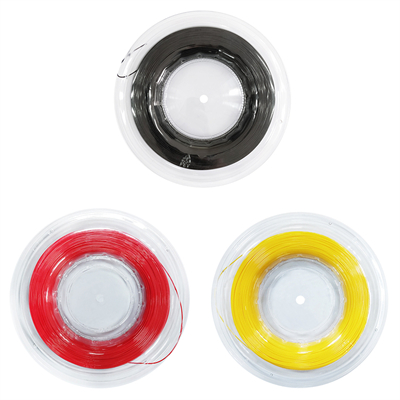Tennis string gauges play a significant role in a player’s performance and feel on the court. Understanding how different string thicknesses influence power, control, and playability can help you make informed decisions:
- Gauge Measurement: Tennis string gauges are measured in millimeters or inches and represent the thickness of the string. Thicker strings have lower gauge numbers.
- Thicker Strings (Lower Gauge): Thicker strings offer increased durability and control, making them suitable for players who frequently break strings or prioritize precision.
- Thinner Strings (Higher Gauge): Thinner strings provide enhanced playability, more spin potential, and a larger sweet spot. They can offer a softer feel and more power.
- Power and Control Balance: Your choice of string gauge affects the balance between power and control in your shots. Thicker strings lean towards control, while thinner strings prioritize power and feel.
- Spin Generation: Thinner strings enable the ball to bite into the strings more effectively, resulting in increased spin generation.
- String Movement: Thinner strings deform more upon impact, allowing for more string movement and increased snapback, contributing to spin and power.
- Vibration Dampening: Thicker strings can offer improved vibration dampening, potentially reducing the risk of arm discomfort.
- Personal Playing Style: Consider your playing style and preferences when choosing string gauge. Aggressive players might lean towards control-oriented thicker strings, while baseline power players might prefer thinner strings.
- Experimentation: Trying different string gauges during practice sessions can help you identify the gauge that aligns best with your playing style.
- Consulting Experts: Seeking advice from tennis coaches, stringing professionals, or experienced players can provide valuable insights into finding the right string gauge.
Understanding the impact of string gauge on your performance empowers you to tailor your racket setup to enhance your strengths and address specific playing needs.





















